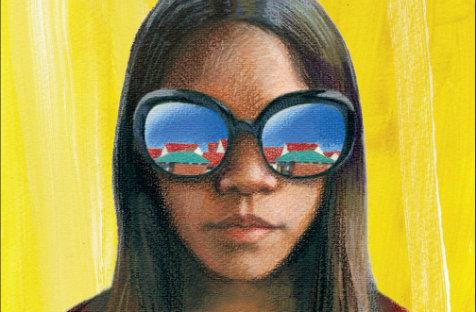First published in 1961, Nene Gare’s novel The Fringe Dwellers follows the lives of the Comeaway family, residents of a camp on the edge of a small country town, a few hours north of Perth. The focus of Gare’s narrative is the eldest daughter, Trilby, a complex and intriguing character. Growing up between two worlds, two cultures, Trilby struggles against inner turmoil and confusion to find her direction and purpose, desperate to find a path that will make her truly happy.
Trilby, and her sister Noonah, return from the Mission in the opening chapter of the novel. It is a bitter-sweet moment as they leave behind, temporarily at least, their younger siblings.
Mrs Comeaway, and to a lesser extent Mr Comeaway, have accepted the notion that living at the Mission will provide a better start for their children – although arguably it is this exposure to ‘white’ values and culture that unsettles Trilby. Children belong with their parents and it takes the level headed, calm Noonah to point this out to her parents:
‘‘It’s like being sick all the time. Not in your stomach, but up here.’ She put a thin hand against her heart.’
Back together again, and spurred to hope by their daughters’ return, the Comeaways move away from their ramshackle ‘humpy’ to a newly built house in Wild-Oat Patch. The notion of fitting in is represented by Mrs Henwood, who though certainly well meaning, falls over herself to ‘help’ Mrs Comeaway ‘learn about our white way of life’. The inappropriateness of Mrs Henwood’s plan provokes mirth; Mr and Mrs Comeaway giggle at the pointlessness of a gifted pot plant designed to help shape their new garden in the ‘right’ way.
Trilby’s conflicted rebellion is at the heart of the novel, and is best emphasised by the yawning chasm between mother and daughter. Gare’s portrayal of Trilby’s mother as a maternalistic character at a loss as to how to approach – let alone communicate with – her daughter, is a powerful one, elucidated in a number of poignant scenes.
Gare’s writing is at its most powerful when she captures the inner turmoil of her protagonist, laying bare the raw emotions that consume her. This is keenly felt in the powerful episode where Trilby is forced to spend a night in jail. Gare uses Trilby’s temporary incarceration to heighten her perception of being trapped both mentally and physically – a feeling that doesn’t dissipate when she is released the following day.
Racism creeps throughout the novel. From the positioning of the Aboriginal family’s camp on the outskirts of town, to the girls’ first rude encounter at a milk bar when they return home, Gare cleverly balances the need to tell a tale and to reflect the mood of the time.
Gare, a white Australian, writes in some depth about an Aboriginal community and characters. Her viewpoint therefore comes from a particular set of cultural values and norms. Text Classic’s edition of The Fringe Dwellers is quite crucially presented with an introduction by acclaimed author Melissa Lucashenko, who provides validation and perspective, and who posits Nene Gare as a writer ‘far ahead of her time’.
Rating: 4 out of 5
The Fringe Dwellers
By Nene Gare
Paperback, 352pp, RRP $12.95
ISBN: 9781922079541
Text Publishing






